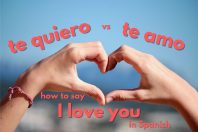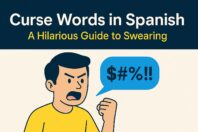Chess in Spanish: Checkmate opponents with your bilingual skills

Get our free email course, Shortcut to Conversational.
Have conversations faster, understand people when they speak fast, and other tested tips to learn faster.
More infoChess, a game whose history dates back to the third century BC, has transcended culture and unites people worldwide. With this in mind, specific vocabulary for chess in Spanish is nearly as old as the language itself.
This ancient game, played in Spanish-speaking countries just as much as it’s played elsewhere, is more than just a hobby. It is part of a rich cultural tradition, from Spain’s chess cafes to exciting tournaments in Latin America.
The game of chess develops the mind, and can serve as an excellent language-learning tool. Learning to play chess in Spanish can offer non-native speakers a unique way to connect with a broader community of people who love playing it.
For avid players, mastering Spanish chess vocabulary can add a helpful layer to your language skills. In this post, we’ll learn some basic terms and concepts of the game, along with specific movements and the names of the chess pieces in Spanish. Let’s get started!
Chess in Spanish: Ajedrez
Let’s start with the basics. How do you say chess in Spanish? Ajedrez is the Spanish word for chess.
El ajedrez, also called the game of kings, is a tactical and strategic game where the goal is to checkmate, or outsmart, your opponent and claim victory.
Now that we know how to say chess in Spanish, it’s time to learn some terms related to el ajedrez.
| English | Spanish |
| Chess | El ajedrez |
| Chess game | El juego de ajedrez |
| Chessboard | El tablero |
| Chess player | Ajedrecista |
| Chess set | El set de ajedrez |
| Chess pieces | Las piezas de ajedrez |
| Chess club | El club de ajedrez |
| Chess clock | Reloj de ajedrez |
| Square | La casilla |
| Tournament | El torneo |
| Move | El movimiento |
| Rank | La fila |
| Opening | La apertura |
| Middlegame | El mediojuego |
| Final | El final |
| File | La columna |
- The chess pieces are on the chessboard. – Las piezas de ajedrez están en el tablero.
- The chess players are competing in the tournament. – Los ajedrecistas están compitiendo en el torneo.
Chess pieces in Spanish: Piezas de ajedrez
Knowing the names of the chess pieces in Spanish is essential to fully appreciate how to play and understand the game’s strategies. Just like in English, some Spanish nobility titles are used for the chess pieces’ names in Spanish.
Here are the names of the Spanish chess pieces.
| Chess pieces | Piezas de ajedrez |
| The king | El rey |
| The queen | La reina |
| The rook | La torre |
| The knight | El caballo |
| The bishop | El alfil |
| The pawn | El peón |
- The king is the most important chess piece on the chessboard. – El rey es la pieza de ajedrez más importante en el tablero.
- The pawn can move two squares on its first move. – El peón puede avanzar dos casillas en su primer movimiento.
Value of the chess pieces: Valor de las piezas
Understanding the values of chess pieces is essential for developing strategic skills and making decisions during the game. It also helps us review numbers in Spanish while playing. Each piece has a specific value that reflects its power and importance on the chessboard.
Let’s learn the value of the pieces on el tablero.
| Value of the pieces | Valor de las piezas |
| The king: Invaluable | El rey: Invaluable |
| The queen: nine points | La reina: nueve puntos |
| The rook: five points | La torre: cinco puntos |
| The knight: three points | El caballo: tres puntos |
| The bishop: three points | El alfil: tres puntos |
| The pawn: one point | El peón: un punto |
- The knight and the bishop are worth three points on the chessboard. – El caballo y el alfil valen tres puntos en el tablero.
- Although the king has infinite value, the queen is the most powerful piece on the chessboard. – Aunque el rey tiene un valor infinito, la reina es la pieza más poderosa del tablero.
The movements of chess pieces in Spanish: Movimientos de las piezas
Now that we’ve seen the chess pieces’ names in Spanish and their value, it’s time to understand how they move on the chessboard.
Learning how chess pieces move is key to playing the game well. In this section, we’ll review how to describe the standard movements of chess pieces in Spanish.
| Piece | Pieza | Movement | Movimiento |
| The king | El rey | One square in any direction | Una casilla en cualquier dirección |
| The queen | La reina | Any number of squares in diagonal, horizontal, or vertical | Cualquier número de casillas en diagonal, horizontal, o vertical |
| The rook | La torre | Any number of squares in horizontal or vertical | Cualquier número de casillas en horizontal o vertical |
| The knight | El caballo | Two squares straight, and then one square perpendicular, forming an “L” | 2 casillas de frente y una en perpendicular formando una “L” |
| The bishop | El alfil | Any number of squares in diagonal | Cualquier número de casillas en diagonal |
| The pawn | El peón | One square forward | Una casilla adelante |
- The bishop moves diagonally on the chessboard. – El alfil se mueve en diagonal en el tablero.
- The rook can move horizontally or vertically. – La torre puede desplazarse horizontalmente o verticalmente.
Chess tactics in Spanish: Tácticas
In chess, a tactic is a move or series of moves that gives al ajedrecista an advantage. With this advantage, we can win a piece or even an attack that results in a checkmate.
Now, let’s explore the most common tactics of chess in Spanish.
| Tactics | Tácticas |
| Checkmate | Jaque mate |
| Gambit | Gambito |
| Promotion | La coronación |
| Protect the king | Proteger al rey |
| Castling | El enroque |
| Double attack | El ataque doble |
| Pawn promotion | La promoción de peón |
- Castling can give safety to protect the king. – El enroque puede dar seguridad para proteger al rey.
- The chess player saw an opportunity and quickly delivered checkmate with the rook. – El ajedrecista vio una oportunidad y rápidamente dio jaque mate con su torre.
Chess verbs in Spanish: Verbos
Chess isn’t just about the pieces, it’s also about the actions. Here are some common verbs associated with chess.
| English | Spanish |
| To play | Jugar |
| To move | Moverse |
| To capture | Capturar |
| To hover | Desplazarse |
| To defend | Defender |
| To threaten | Amenazar |
| To castle | Enrocar |
| To promote | Coronar |
| To occupy | Ocupar |
| To jump over | Saltar |
| To be worth | Valer |
| To compete | Competir |
| To win | Ganar |
| To lose | Perder |
| To defeat | Derrotar |
Conclusion: Chess in Spanish
Checkmate! We’ve won the game!
Today we dove into the fascinating world of chess in Spanish. Let’s recap what we covered before packing up the chessboard.
First, we learned how to say chess in Spanish: aljedrez. Then, we discussed essential topics like the names of the chess pieces in Spanish, explored their values, and how they move on the chessboard. Each aspect adds a layer of depth to both the game and the language. We continued by learning the names for the common chess tactics in Spanish, rounding out the post with a list of verbs used in the game.
This knowledge can serve you to continue adventuring in the world of chess in Spanish. Combining chess with Spanish makes learning fun and engaging. So, grab a chess set, challenge a friend, and enjoy the game while improving your language skills.
Remember, the adventure doesn’t end here. There are always more moves to learn and tactics to discover!



